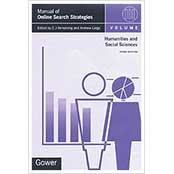Article
This is the third edition of this work and it is now in three volumes. Our editor has sent each volume to a different reviewer. All three volumes have the introduction by the editors, which explores the changes since the last edition. They also consider topics such as search and database evaluation, controlled versus natural language searching. The main changes since the last edition are databases on the Web, and the increase in end‐user searching.
The chapters on agriculture, earth sciences, chemistry, biosciences, and engineering and energy are aimed at the professional intermediary and skilled end‐user. The agriculture chapter covers mainly the traditional databases. Earth sciences covers a wide range of sources. The chemistry chapter is the most extensive with a good account of CA Selects and many other sources. Biosciences includes medicine, and the chapter is mainly about Medline in all its forms, with some mention of other sources. The engineering chapter concentrates on EI (Engineering Index), but covers more specialist databases.
There are lots of sample output, screen dumps and tabulated material. I would have liked to read more about the new approach to indexing that Biosis have introduced, as unless you are on their mailing lists you may not even know about it. I was surprised to see Agrep mentioned, as I was under the impression that this file closed in the mid‐1990s. Otherwise I found most of what I expected, and in the sections outside the areas in which I have worked much that I did not know.
I took the book with me to a meeting in Birmingham, and on the longer than expected journeys to and back I read the book. From the rather different approaches of the various chapter authors I learned various new points about databases I use. I also found myself reformulating their observations and applying them to other databases. I can recommend the book to information professionals as an informative read, although probably not in one go.
The disadvantage in reading the book as a text is that only the major items stick in the mind. It was, therefore, somewhat of a surprise that a quick count of the index to databases revealed that well over 1,000 databases are mentioned. So it is back to re‐reading the book to find new information sources that I can add to those I use.
The main users of this book will be information professionals who do a lot of online searching. I am sure the more experienced end‐users would benefit from reading the chapter that covers their interest. I have no problem with end‐users; as long as they are doing themselves justice.
The book is also recommended to schools of library and information studies. Online searching is a skill that has to be learnt.
The separate volumes are sold separately, but I would like to read the chapters on patents in Volume 2 and citations in Volume 3. I will have to track down a library copy somewhere.
